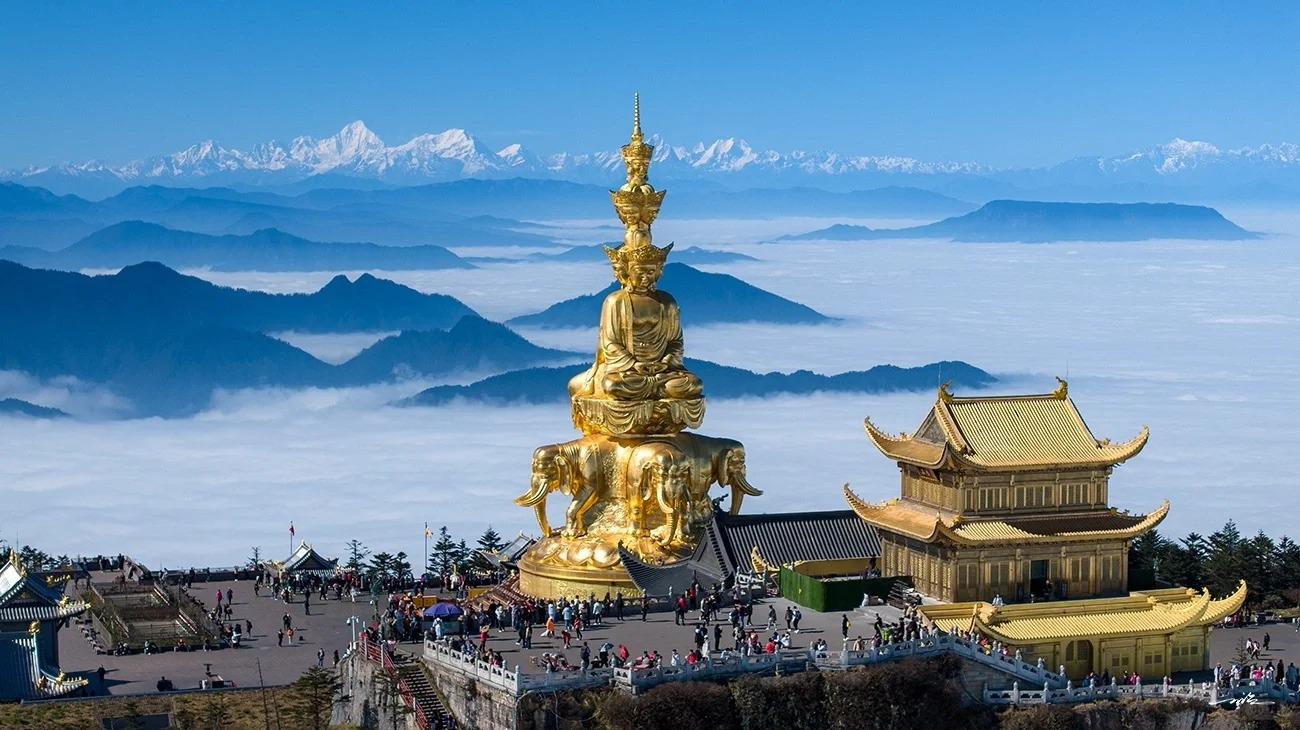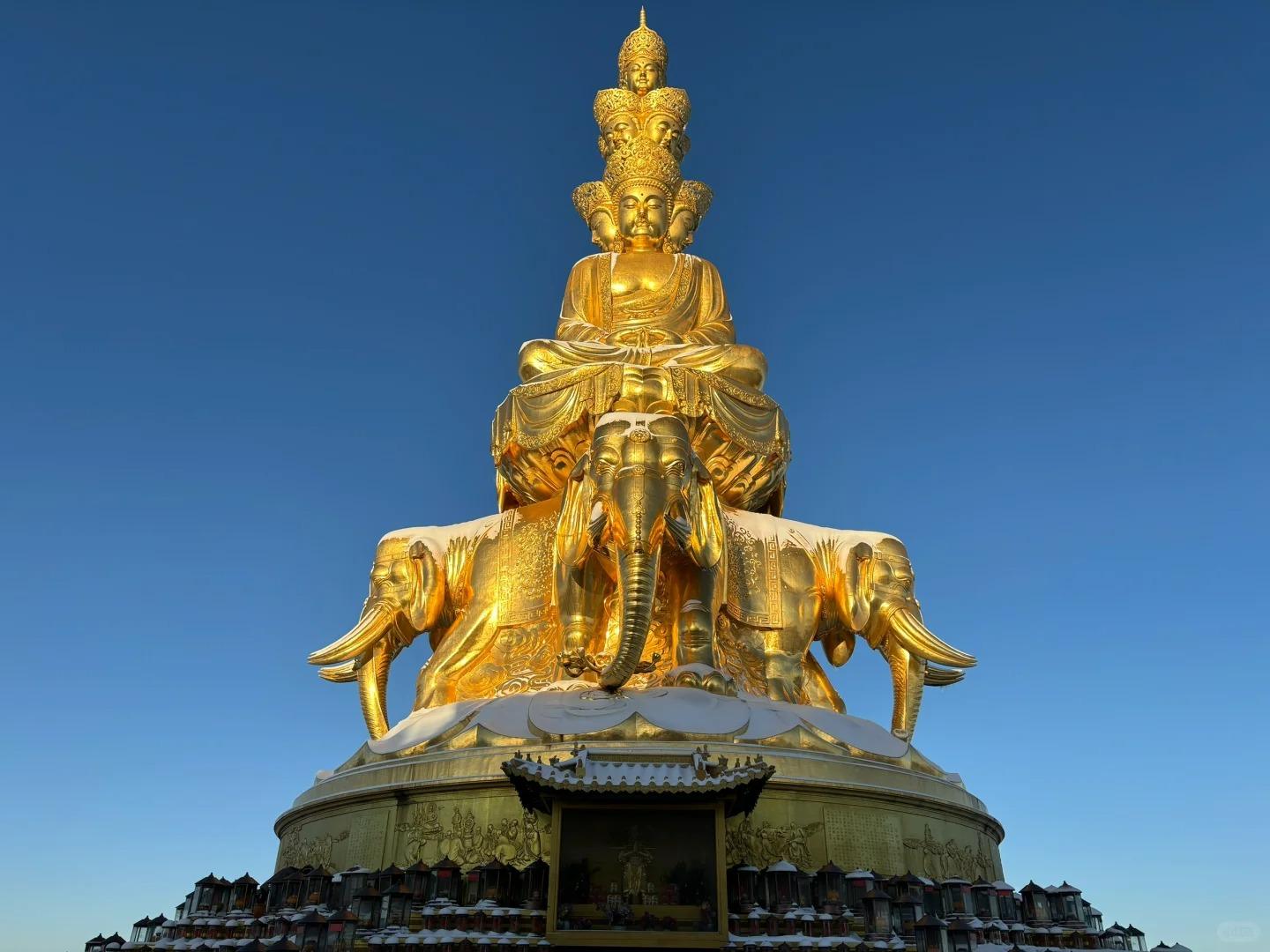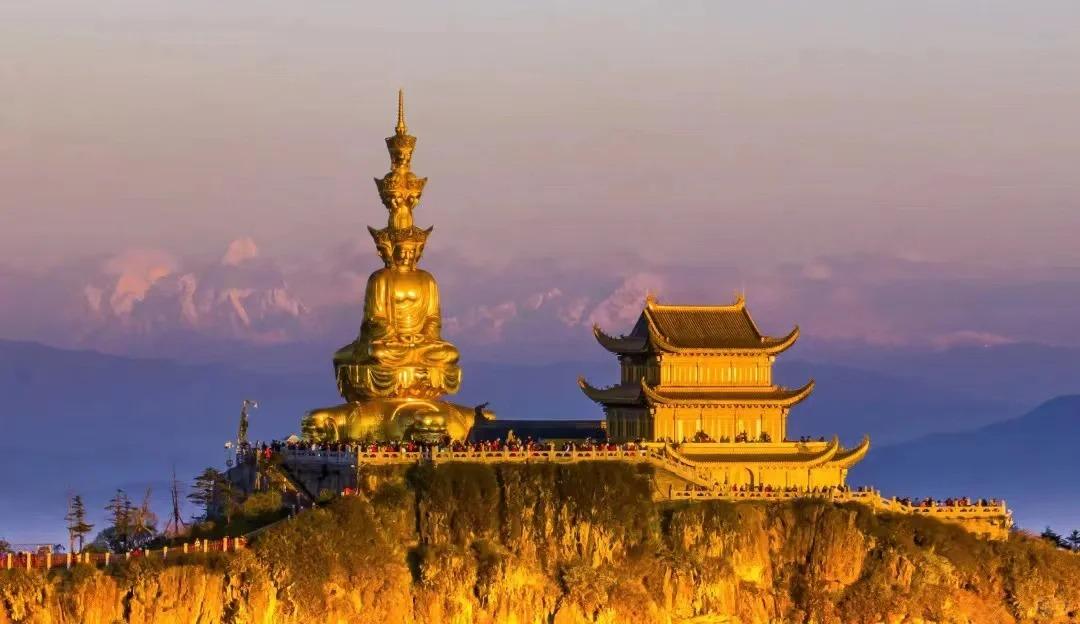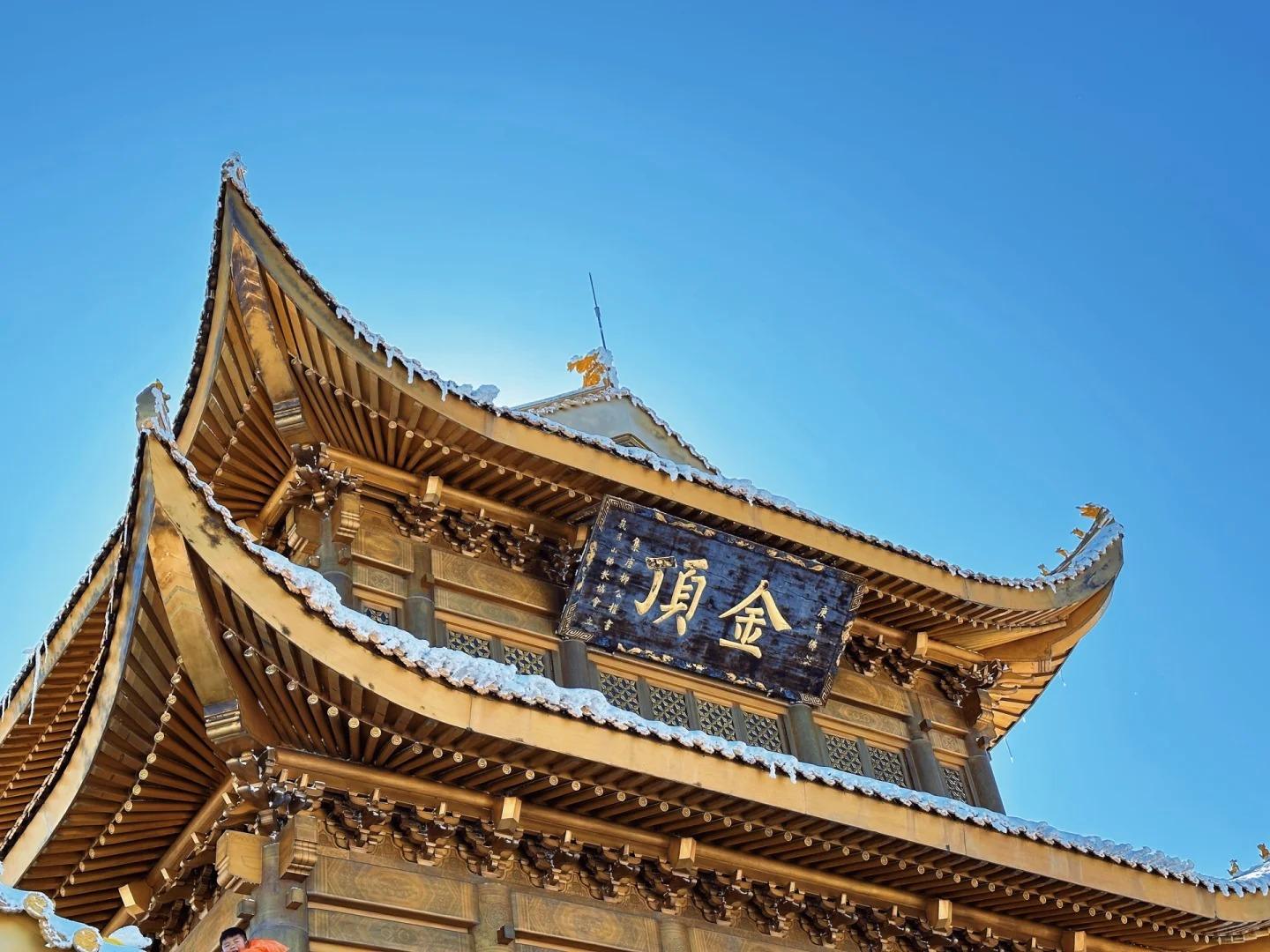Visiting Information
| Information | Details |
|---|---|
| Chinese Name | 金顶 (Jīndǐng) |
| Location and Address | Mount Emei, Emeishan City, Sichuan Province, China |
| Opening Hours | Open 24 hours |
| Entrance Fee | Included in Mount Emei entrance fee (185 CNY) |
| How to Get There | By Bus: Take bus to Mount Emei, then cable car to the summit By Taxi: From Emeishan City to Mount Emei, then cable car No direct metro access |
| Best Time for Visit | April to October for better weather and visibility |
| Contact Info | Tel: +86 833 559 3334 |
Overview
The Golden Temple, also known as Jindǐng in Chinese, is a renowned Buddhist structure located at the summit of Mount Emei in Sichuan Province, China. Standing at an elevation of 3,077 meters, it is one of the most iconic landmarks of Mount Emei, a UNESCO World Heritage Site. The temple is famous for its golden hue and its significance in Chinese Buddhism.
Historical Background
The Golden Temple has a history dating back to the Ming Dynasty (1368-1644). It was originally constructed in 1602 during the reign of Emperor Wanli. The temple was rebuilt and expanded several times throughout history, with major renovations occurring during the Qing Dynasty and in modern times. Its location on Mount Emei, one of the Four Sacred Buddhist Mountains of China, adds to its historical and religious significance.

Architectural Features
- Golden Structure: The most striking feature of the temple is its golden exterior. The entire structure is covered in copper tiles coated with gold, giving it a brilliant shine that is particularly spectacular when hit by sunlight. This golden appearance is the source of its name and makes it visible from great distances on clear days.
- Copper Casting: The temple is notable for being cast entirely in copper, weighing over 62 tons. This makes it not only a religious site but also a remarkable feat of metallurgy and craftsmanship from the Ming Dynasty era.
- Buddha Statues: Inside the temple, there are numerous Buddha statues. The central statue is of Samantabhadra (Puxian in Chinese), the bodhisattva of universal virtue, sitting atop a white elephant with six tusks. This statue is a focal point for worship and meditation.
- Surrounding Pavilions: The main temple is surrounded by several smaller pavilions and structures, each with its own architectural beauty and religious significance. These include prayer halls, monk quarters, and areas for spiritual practices.
Cultural Importance
The Golden Temple holds immense cultural and religious importance in Chinese Buddhism. It is one of the most sacred sites on Mount Emei, which itself is one of the Four Sacred Buddhist Mountains of China. Pilgrims and devotees from all over the world visit the temple to pay homage, meditate, and seek spiritual enlightenment. The temple is also significant in Chinese culture as a symbol of the harmony between human creation and natural beauty, epitomizing the Buddhist concept of the interconnectedness of all things.
Surrounding Attractions
- Mount Emei: The Golden Temple is situated at the summit of Mount Emei, a UNESCO World Heritage Site. The mountain itself is a major attraction, known for its diverse ecosystems, stunning landscapes, and numerous temples and monasteries scattered across its slopes.
- Wannian Temple: Located lower on Mount Emei, Wannian Temple is one of the oldest and most important temples on the mountain. It houses a famous bronze statue of Puxian Bodhisattva and offers a glimpse into ancient Chinese Buddhist architecture.
- Baoguo Temple: Situated at the foot of Mount Emei, Baoguo Temple serves as the starting point for many pilgrims and tourists ascending the mountain. It’s known for its ancient architecture and collection of Buddhist relics.
- Leshan Giant Buddha: Although not on Mount Emei itself, the Leshan Giant Buddha is a nearby attraction that’s often combined with visits to the Golden Temple. It’s the largest stone Buddha statue in the world and offers an impressive view of the confluence of three rivers.

Photography Opportunities
- Golden Glow: The most iconic photography opportunity at the Golden Temple is capturing the golden structure itself, especially during sunrise or sunset when the light creates a magical glow on the copper tiles. The contrast between the golden temple and the surrounding natural landscape makes for stunning photographs.
- Sea of Clouds: Due to its high altitude, the Golden Temple often sits above a sea of clouds. This phenomenon creates ethereal scenes where the temple appears to be floating in the sky, offering unique and breathtaking photographic opportunities.
- Buddha Ray: A rare phenomenon known as Buddha Ray or Buddha Light can sometimes be observed from the Golden Temple. This optical illusion creates a halo-like effect around one’s shadow on the clouds, providing a once-in-a-lifetime photo opportunity for lucky visitors.
- Panoramic Views: The summit location of the Golden Temple offers panoramic views of the surrounding mountains and valleys. On clear days, photographers can capture sweeping landscapes that showcase the natural beauty of the region.
Modern Importance
- Religious Center: The Golden Temple continues to serve as an important center for Buddhist practice and pilgrimage. It attracts devotees from around the world who come to pray, meditate, and seek spiritual guidance, maintaining its role as a living religious site.
- Tourist Attraction: Beyond its religious significance, the Golden Temple has become a major tourist attraction, drawing visitors from all over China and internationally. This has contributed significantly to the local economy and helped in the preservation and maintenance of the site.
- Cultural Preservation: The temple plays a crucial role in preserving traditional Chinese Buddhist culture and art. Its architecture, statues, and religious practices serve as living examples of China’s rich cultural heritage.
- Environmental Awareness: As part of Mount Emei, the Golden Temple area contributes to raising awareness about environmental conservation. The delicate balance between tourism and preserving the natural ecosystem of the mountain is a modern challenge that highlights the importance of sustainable tourism practices.

FAQ
- What is the Golden Temple famous for?
The Golden Temple is famous for its stunning golden exterior, its location at the summit of Mount Emei, and its significance in Chinese Buddhism. - What’s inside the Golden Temple?
Inside the Golden Temple, visitors can find Buddha statues, including a central statue of Samantabhadra Bodhisattva, as well as various religious artifacts and areas for worship and meditation. - Is the Golden Temple free?
No, the Golden Temple is not free. It’s included in the entrance fee for Mount Emei, which is 185 CNY. - Is the Golden Temple worth visiting?
Yes, the Golden Temple is definitely worth visiting for its stunning architecture, religious significance, and breathtaking views from the summit of Mount Emei. - What to do in the Golden Temple?
Visitors can admire the golden architecture, observe or participate in Buddhist rituals, enjoy panoramic views, take photographs, and experience the unique atmosphere at the summit of Mount Emei. - How do I get to the Golden Temple in the local city?
From Emeishan City, take a bus to the Mount Emei scenic area. Then, you can either hike or take a cable car to reach the summit where the Golden Temple is located. - How to visit the Golden Temple?
To visit the Golden Temple, first reach Mount Emei. Then take the cable car or hike to the summit. It’s advisable to start early, wear comfortable shoes, bring warm clothes as it can be cold at the summit, and be prepared for potential crowds during peak season.



